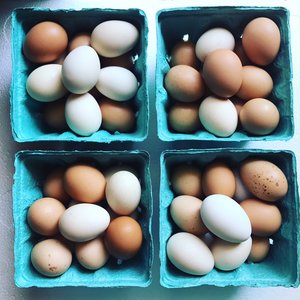Microgreens: Beauty as an Antidote to Everything
Features Ingredients Local Farm healthy Education


I submit that raw milk might just be the most real of all foods.
Start with the fact that milk is the only food created specifically to feed something. (Honey doesn’t count, as the pollen honey is made from has its own agenda.) Synonymous with nourishment, raw milk is the first food most human beings—all mammals—ingest. And raw milk, for it to be free of any off flavors and to be safe to drink, requires painstaking care to produce. Every little step in the process matters.
The subtle and intricate flavors in raw milk, the very opposite of the one-note flavor of pasteurized milk or, worse, the waxy cardboard taste vacuum of skim, come from the undenatured biocomplexity in unpasteurized milk. When I read chemists-for-hire claiming, on behalf of big commercial dairy, that there isn't that much nutritional difference between pasteurized and raw, I choose to trust my palate. Well, my palate and the biochemists who say that the difference is real and considerable.

Writer Luke Shanahan contemplates the virtues of a truly excellent fresh egg with Lloyd Allen of Double L Market.
Consider the egg.
Any serious cook knows its singular importance in the kitchen. Many cooks—serious and novice alike—remember the egg as the first thing they ever learned to cook.
In the book The Next Course, rock-&-roller chef Marco Pierre White, who at 33 became the youngest cook ever to be awarded three Michelin stars, reveals his country side when he suggests that scrambled (gulls) eggs with celery salt served with mayonnaise—an emulsion of egg yolk, acid and oil—may be a worthy last meal on earth. (Here's a handy list of local CT farms that produce fresh eggs.)






